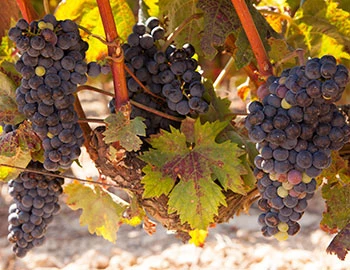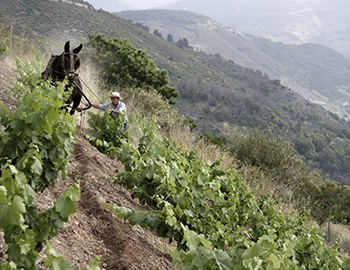Quintanilla 2021
Single Plot Wine, Álava, Bodegas y Viñedos Artadi, 750 ml

| Grape variety: | Tempranillo |
| Producer: | Bodegas y Viñedos Artadi de Laguardia |
| Origin: | Spain / Rioja |
| Other vintages: |
Description
The single vineyard Quintanilla in the small village of Elvillar in the Rioja Alavesa wine-growing region covers just 1.13 hectares. The Tempranillo vines were planted in 1951 on poor, chalky soil and produce a moderate yield with consistently high quality. These characteristics produce a powerful, lively wine with plenty of richness, red berry notes, mineral aromas and robust and dense tannins, which give the Quintanilla a rustic character.
Attributes
| Origin: | Spain / Rioja |
| Grape variety: | Tempranillo |
| Label: | Certified organic or biodynamic wine |
| Ripening potential: | 3 to 20 years |
| Drinking temperature: | 16 to 18 °C |
| Food Pairing: | Roasted lamb gigot, Châteaubriand, Filet Wellington, Hearty stew with pulses |
| Vinification: | fermentation in wooden barrel, fermentation at low temperatures, long must fermentation |
| Harvest: | hand-picking, strict selection, in small boxes |
| Maturation: | in partly new and used barriques/ Pièces, bâtonnage |
| Bottling: | no filtration |
| Maturation duration: | 8 months |
| Volume: | 14.5 % |
| Note: | Contains sulphites |
Bodegas y Viñedos Artadi de Laguardia
In Rioja Juan Carlos López de Lacalle, oenologist and founder of the Artadi group, has succeeded in making unique wines in an exciting and creative way. This is not least thanks to a distinctive style and his passion for environmentally friendly viticultural methods, which guarantee the future of winemaking and the authenticity of his wines.
This private cooperative project was founded by a group of winemakers in 1985, and has since 1992 been owned by the Lacalle y Laorden family. The vineyards, some of which are over 90 years old and are mainly planted with the Tempranillo grape, stretch from Laguardia to Elvillar de Álava. Some of the area is also dedicated to the white Viura varietal, which is typical of the Rioja region and goes into creating the Viñas de Gain Blanco. Thanks to the location of the vineyards, some of which are over 600 metres above sea level, the grapes benefit not only from optimal sunshine but also from the cooling Atlantic air.

Tempranillo
Iberian Native
The Tempranillo is the emblem of Spain. With its juicy cherry fruit, crisp tannins, and its notes of leather and spices, it gives the Rioja its face. In the Ribera del Duero, it is known as Tinta del país. Here it turns out focused and muscular. As it has inhabited the Iberian Peninsula for centuries, it is known under countless synonyms. Across the border in Portugal, it is called Tinta Roriz, and lends colour and body to port wine. It also plays an important role in the booming wine scene of the Douro Valley. The Tempranillo owes its name to its early maturity – "temprano" in Spanish means "early". Tip: do it like they do in Spain and enjoy it with lamb.

Rioja
Rioja: A legend in upheaval
It is the flagship of the Spanish wine industry: the Rioja region, with its elegant, yet storable wines, most of which are dominated by the Tempranillo, has decisively influenced the image of Spanish wine. Above all, the Reservas and Gran Reservas, aged for years in barrels, enjoy a magical reputation. For about 20 years, the Rioja houses have created a sensation with modern-designed, fruity wines, which are marked more by their terroir than their aging processes.

Spain
Spain – Variety and perfection
“Somewhere in la Mancha, in a place whose name I do not care to remember...,” begins Don Quixote's odyssey.
The most famous part is definitely when Don Quixote thinks windmills are his enemy and wants to fight them – until they nearly kill him. It’s possible there was a bit too much of the La Mancha wine at play. Spanish vines fight for their survival in rugged landscapes, battling fierce drought and rough soils. But they fight well.



